GI Tagged Agricultural Products of Manipur

A Geographical Indication (GI) tag is a form of intellectual property, a certification given to certain goods or products from a specific area or state, or country that is unique to a specific geographical region. The GI plays an important part in preserving many traditional skills and upscaling the trade of that particular product.
From the Kani Shawl of Jammu & Kashmir to the Kodaikanal Malai Poondu of Tamil Nadu, India has more than 300 Geographical Indications, out of which Manipur has four agricultural produce/products in its pocket.
KACHAI LEMON (GI Application No- 466)
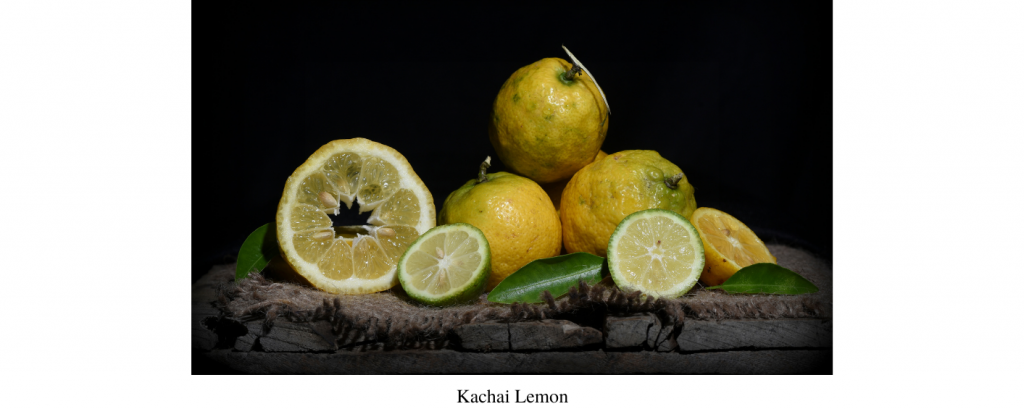
The Kachai Lemon, locally known as Kachai Champra is grown only in the Kachai village in the Ukhrul District of Manipur. As it contains the highest concentration of ascorbic acid, the Kachai Lemon is distinguished from other kinds of lemon cultivated in other parts of the world.
Kachai lemon is a high-yielding landrace with an equally high economic value. In addition to being eaten as fresh fruit, it is used in making pickles and juice. Major value-added products made from it are juice, squash, RTS beverage, and pickle. The ICAR Research Complex for NEH Region, Manipur Centre has standardized a commercially viable technology for converting Kachai Lemon juice into powder. Pectin and ascorbic acid can also be extracted from the juice and peel respectively.
Chak-Hao (GI Application No- 602)
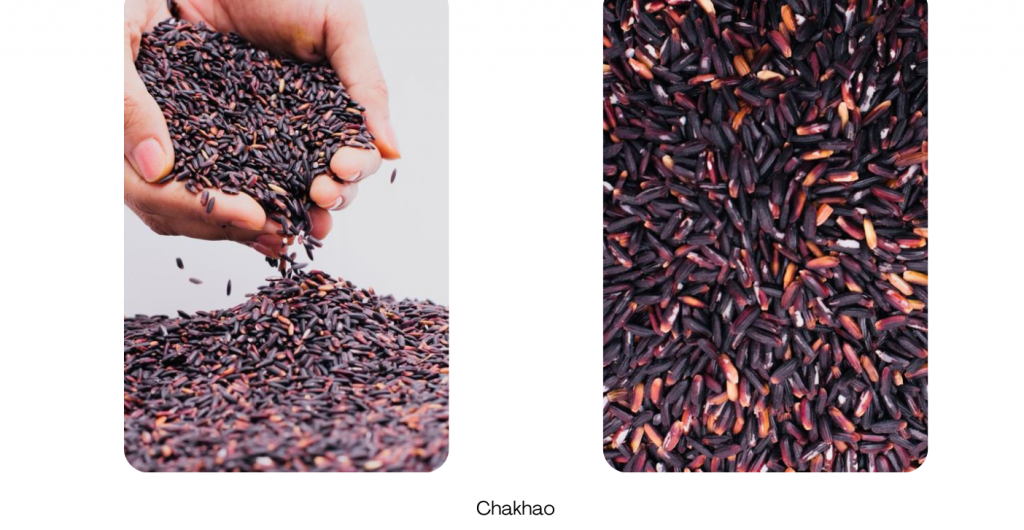
Chak-hao (Black rice), well known for its attractive colour and flavour has the highest anthocyanin, vitamin, and mineral content than white and brown rice and other food grain products. This fragrant sticky rice has been cultivated in Manipur for centuries.
Two types of Chak-Hao, ‘Chak-Hao Amubi’ and ‘Chak-Hao Poireiton’ are grown organically every year, from December to May, and are available throughout the state. The aroma and stickiness of Manipur’s Chak-Hao are what sets it apart from other types of black rice found in other parts of the world.
In addition to being served as Chak-Hao Kheer, a form of dessert, it is also eaten during communal feasts.
Black rice has been proven to lower inflammation levels in the body and has a rich source of protein, fiber, and vitamins. The antioxidants present in the rice can improve immunity and aid in preventing various diseases and infections. Studies have shown that consumption of Chak-Hao helps prevent and treat diseases like atherosclerosis, diabetes, Alzheimer’s disease, hypertension, high cholesterol, arthritis, allergies, aging symptoms, etc.
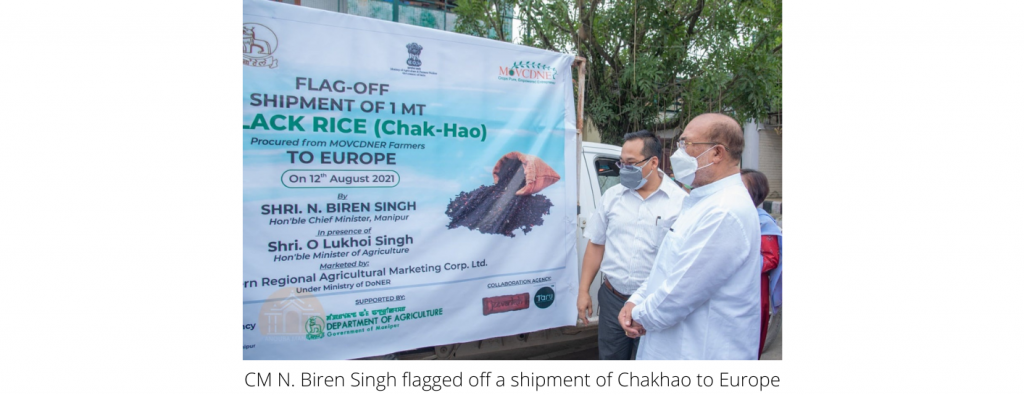
Tamenglong Orange (GI Application No-590)
Tamenglong Orange is a species of the Mandarin family, grown mostly in Manipur’s Tamenglong district. Rich in vitamin A, B, and C, with a unique sweet and sour taste, and is grown using organic methods without the use of chemical pesticides or fertilizers.
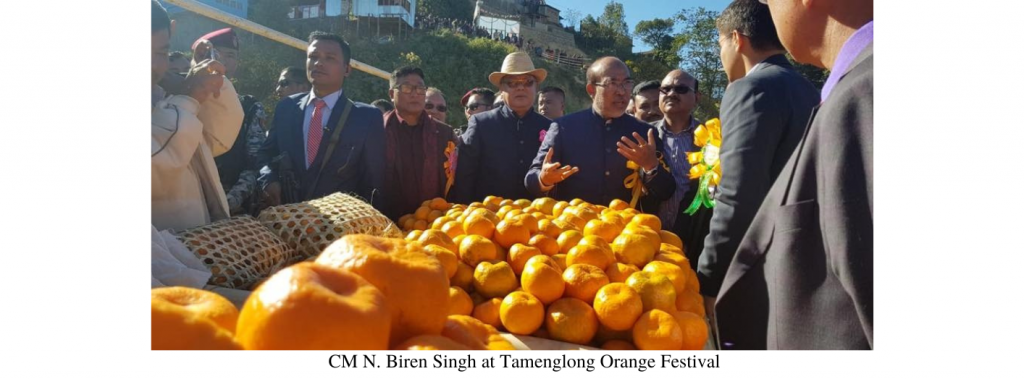
Aside from being eaten raw, this orange is also made into juice, jam, squash, jelly, marmalade, wine, and syrup. Essential oils can also be extracted from the peel that can be used in food, drinks, and cosmetics.
The crop is harvested immediately after maturity (between November and February) to prevent fruit drop, fruit fly infection, shrinkage, and weight loss. To boost tourism, provide farmers a chance to show off their products to potential customers, and add motivation by fostering a closer bond between farmers and food processing facilities, the Tamenglong Orange Festival is organized annually in the first or second week of December.

Hathei Chilli (Sirarakhong Chilli) (Gi Application No- 592)
Sirarakhong Chilli, a chilli grown only in the climatic conditions of the Sirarakhong village in the Ukhrul district of Manipur, is rich in calcium and vitamin C. These chillies also grow in the adjoining villages but their quality, in terms of taste, flavour, and colour, is considered low to the variety that is grown in Sirarakhong.
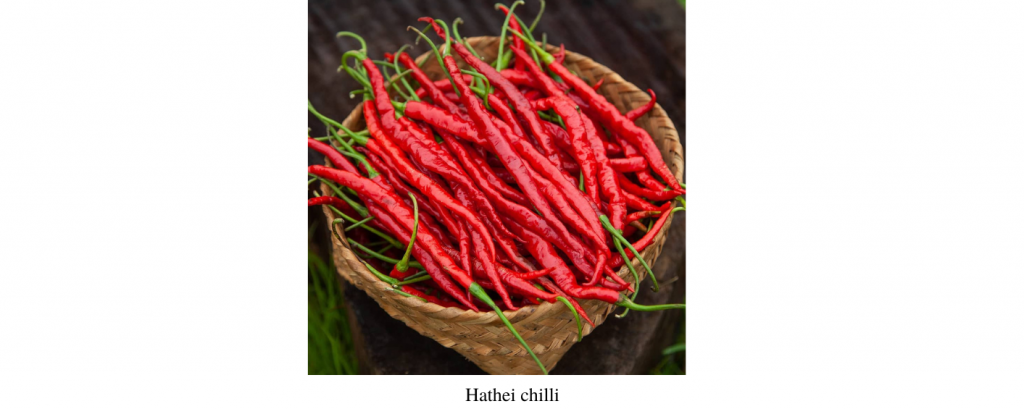
Harvesting of the Hathei started from July onwards. To achieve a good colour, they are thoroughly swirled after being sun-dried or cured using a nearby furnace. The dried chilies are ground with a pestle and mortar and kept in a dry environment.
An annual Hathei Phanit (Chilli festival) is celebrated every year, celebrating this unique gift of God.





